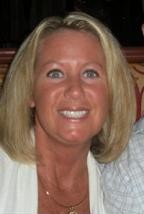Reaching Older Adults: National HIV/AIDS & Aging Awareness Day

Michelle ScavnickyWhat do you know about the risk of HIV infection for older adults? If the answer is “not much,” we can help. The 4th annual National HIV/AIDS and Aging Awareness Day (NHAAADExit Disclaimer ) will take place on September 18, 2011. NHAAAD raises awareness about the impact of HIV/AIDS and the importance of HIV testing and prevention education for older Americans.
The NHAAAD campaign theme is “Aging is a part of life; HIV doesn't have to be." The campaign focuses on:
- People living with HIV/AIDS who are aging with the disease, or who are over 50 at the time of their initial diagnosis
- Baby boomers who need education about HIV prevention strategies
- The increasing number of grandparents who have become the primary guardians for children who have lost their parent(s) to HIV/AIDS
NHAAAD highlights the increasing need for HIV prevention education for older adults, as well as the need for better data collection and more research about the impact of HIV and aging on this population.
Because HIV is most commonly transmitted through sexual activity, many people tend to assume that older adults have very little risk of HIV infection. In 2007, researchers at the University of Chicago surveyed 3,005 AmericansExit Disclaimer between the ages of 57 and 85 about their sexuality and health. A significant percentage reported that they were sexually active:
- 73% of those aged 57–64
- 53% of those aged 65–74
- 26% of those aged 75–85
One other finding of particular interest to healthcare providers and HIV educators: overall, only 38% of men in the study, and only 22% of women, reported ever having discussed sexual activity with their doctor after age 50.
It is important to keep that information in mind, since, in 2009, people aged 50 and older accounted for 17% of new HIV/AIDS diagnoses. By 2015, the Centers for Disease Control and Prevention (CDC) estimate that nearly 50% of Americans with HIV will be age 50 and older also promotes HIV education and testing for adults over age 64 and encourages healthcare providers to talk to their older patients about sexual activity and HIV prevention.Ways to get involved in National HIV/AIDS and Aging Awareness Day:
- Use the NHAAAD social media guideExit Disclaimer (PDF 172KB) to promote your efforts
- #AIDSandAGINGExit Disclaimer is the official hashtag for NHAAAD. Please retweet!
- Like us on Facebook at NHAAAD: on.fb.me/pjLwzI
- Download NHAAAD toolsExit Disclaimer and share them with your neighbors, colleagues, and friends.
- Promote HIV testing among older Americans.
- Provide HIV prevention and education messages and resources that link to care for older Americans living with HIV.
- Conduct local community awareness and education events in settings where older Americans live or meet (e.g., retirement homes, assisted living facilities, community centers, and faith communities).
To download NHAAAD-related materials, please visit our website at https://www.nhaad.orgExit Disclaimer To find an HIV testing site near you, visit https://locator.hiv.gov.